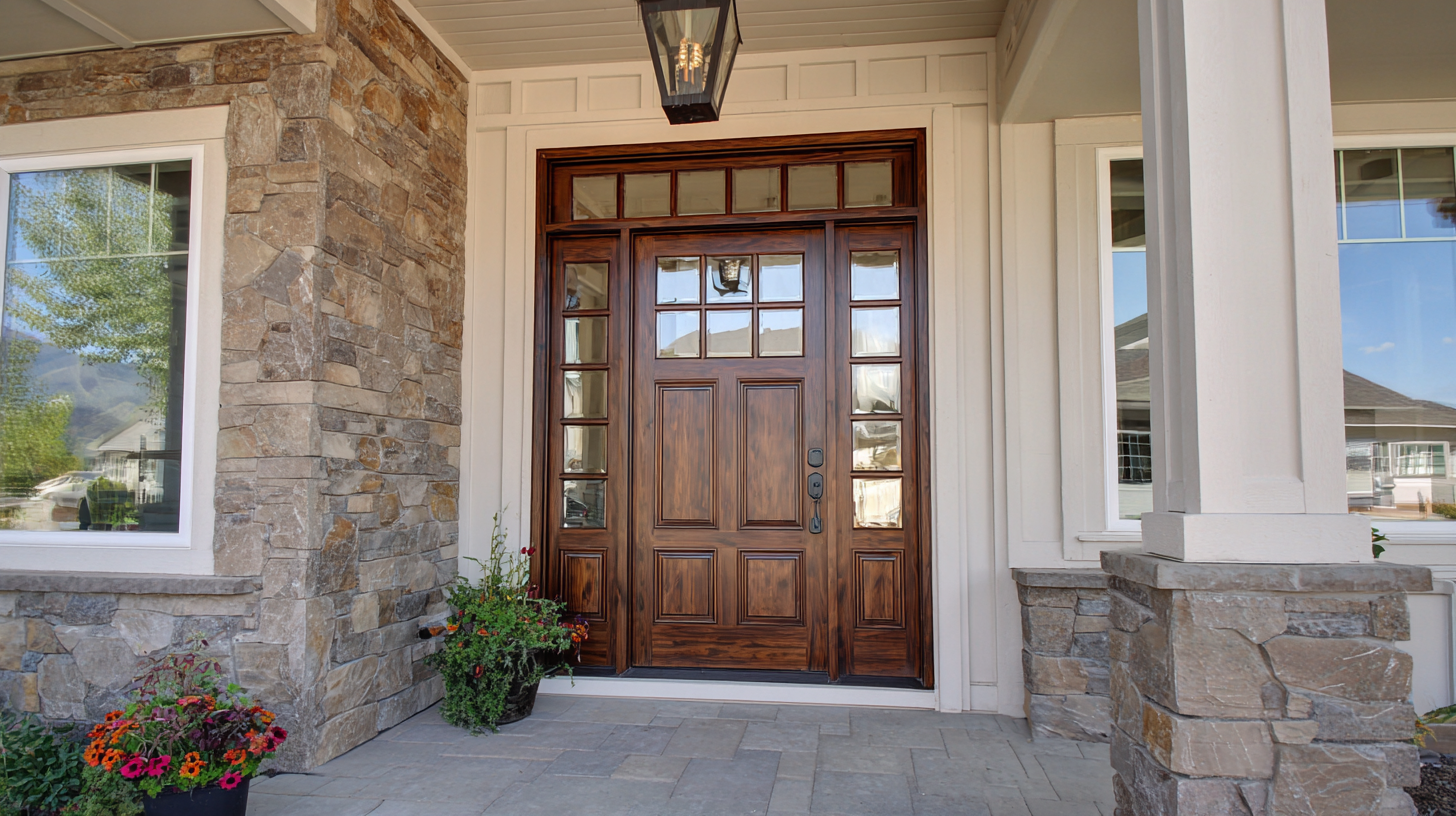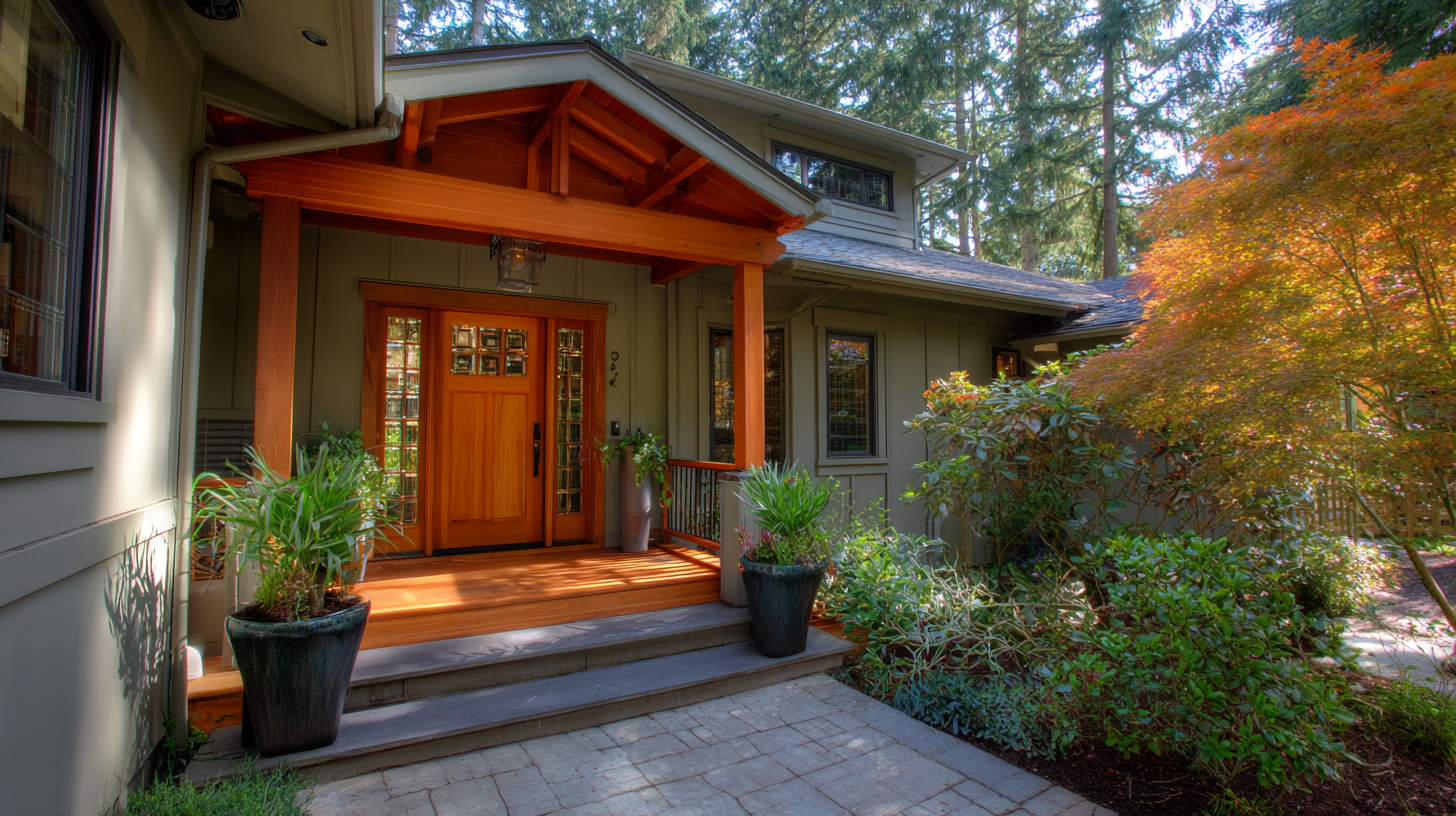 Enhancing the curb appeal of a home is not only about aesthetics; it directly correlates with its market value and energy efficiency. One of the key components often overlooked is the quality of exterior door trim.
According to a report by the Remodeling Magazine’s Cost vs. Value, high-quality exterior improvements, including door trim, can yield a return on investment of over 70%.
Furthermore, well-designed and insulated exterior door trim can significantly reduce energy loss, with the U.S. Department of Energy estimating that proper sealing around doors can cut energy costs by up to 15%.
This highlights the dual importance of exterior door trim, which not only enhances visual appeal but also contributes to the long-term savings and value of the home.
As homeowners seek to invest in improvements that pay off, understanding how exterior door trim affects both aesthetics and energy efficiency becomes essential.
Enhancing the curb appeal of a home is not only about aesthetics; it directly correlates with its market value and energy efficiency. One of the key components often overlooked is the quality of exterior door trim.
According to a report by the Remodeling Magazine’s Cost vs. Value, high-quality exterior improvements, including door trim, can yield a return on investment of over 70%.
Furthermore, well-designed and insulated exterior door trim can significantly reduce energy loss, with the U.S. Department of Energy estimating that proper sealing around doors can cut energy costs by up to 15%.
This highlights the dual importance of exterior door trim, which not only enhances visual appeal but also contributes to the long-term savings and value of the home.
As homeowners seek to invest in improvements that pay off, understanding how exterior door trim affects both aesthetics and energy efficiency becomes essential.
Choosing the right materials for exterior door trim is crucial for enhancing home value and energy efficiency. When selecting trim, homeowners should consider durability, aesthetic appeal, and insulation properties. Wood, for instance, offers a classic look and is easy to customize, but it requires regular maintenance to withstand the elements. Composite materials, on the other hand, provide a low-maintenance alternative that resists rot and insects, making them a smart investment for long-term use.
Additionally, energy-efficient trims can significantly impact a home's overall energy performance. Materials such as foam-filled PVC offer excellent insulation, helping to reduce heat loss during colder months and minimizing energy costs. This not only contributes to a more comfortable living environment but also boosts the home’s marketability.
By prioritizing the right materials for exterior door trim, homeowners can enhance curb appeal while simultaneously investing in their property's future value and sustainability.
One of the most powerful ways to boost your home's curb appeal and energy efficiency is through the strategic use of color and design in exterior door trim. According to the National Association of Realtors, homes with enhanced curb appeal can sell for 10-15% more than similar properties. The right color not only attracts potential buyers but can also influence perceptions of energy efficiency. For instance, lighter colors can reflect heat, helping to keep your home cooler and reduce air conditioning costs during hot months.
When selecting colors for your door trim, consider using shades that complement the overall aesthetic of your home while also being mindful of energy efficiency. A study published in the Journal of Architecture found that homes painted in light, reflective colors used up to 25% less energy for cooling than those with darker hues. A vibrant, well-coordinated color scheme can make your home more inviting, encouraging passersby to envision it as their future residence.
Tips: To maximize impact, opt for high-quality paint that is specifically designed for exterior surfaces, ensuring it withstands the elements. Additionally, consider incorporating designs that reflect architectural trends in your area, which can resonate well with buyers and enhance perceived value.

When selecting exterior door trim, homeowners should prioritize energy efficiency ratings, which can significantly affect both comfort and utility bills. According to the U.S. Department of Energy, doors contribute to 13-15% of a home's total energy loss. High-quality door trims that are properly insulated can minimize air leakage, with energy-efficient options typically achieving a lower U-factor, meaning they provide better thermal performance. For instance, door trims with a U-factor of 0.25 or lower are recommended for optimal insulation in colder climates.

Moreover, recent market analysis by the National Association of Realtors highlights that homes with energy-efficient features, including well-insulated exterior door trims, can command up to 10% higher resale value compared to those without. Homebuyers are increasingly looking for energy-efficient homes, with nearly 80% indicating that energy efficiency is a significant factor in their purchasing decisions. Therefore, investing in quality exterior door trim not only boosts curb appeal but also enhances energy efficiency, making it a smart choice for homeowners seeking to improve their property's value.
Quality exterior trim plays a significant role in enhancing the aesthetic appeal of a home, which directly contributes to increased resale value. When potential buyers approach a property, the first impression is often formed by the appearance of the exterior. High-quality trim not only showcases craftsmanship but also signifies that the home has been well-maintained. This attention to detail can set a home apart in a competitive market, ultimately leading to higher offers and a quicker sale.
Tips for Choosing Exterior Trim:
Beyond aesthetics, quality exterior trim can significantly improve energy efficiency by providing better insulation and sealing gaps that may allow drafts. When buyers see quality materials and construction details that promise lower energy bills, they are more likely to perceive a home as a wise investment. This combination of curb appeal and functionality creates a compelling case for prospective buyers, highlighting the importance of quality exterior trim in any home renovation or resale strategy.
Upgrading your home’s exterior door trim is not just an aesthetic decision; it can lead to significant long-term energy savings. According to the U.S. Department of Energy, up to 30% of a home's energy use can be attributed to air leakage through doors and windows. By installing high-quality door trim, homeowners can help create a better seal, reducing drafts and improving energy efficiency. For instance, investing in insulated door trim can result in a return on investment of approximately 70% to 90%, depending on the climate and the overall configuration of the home.
**Tips:** Choose door trim materials that are durable and suited for your local climate. For example, fiberglass or composite trims often provide superior insulation compared to traditional wood. Additionally, consider hiring a professional for installation to ensure that the trim is properly fitted, which can further minimize air leaks and enhance energy savings.
Moreover, enhancing curb appeal through quality exterior door trim can have a positive impact on home value. Remodeling Magazine's Cost vs. Value report shows that exterior upgrades, including door trim renovations, can yield an impressive return on investment. Homes with well-maintained and visually appealing exteriors often sell faster and at a higher price point. Thus, the decision to upgrade door trim not only pays off energy-wise but also bolsters your home's market value.
**Tips:** When selecting trim styles, consider coordinating with existing architectural features of the home to maximize visual impact. This can enhance both the aesthetics and the marketability of your property.